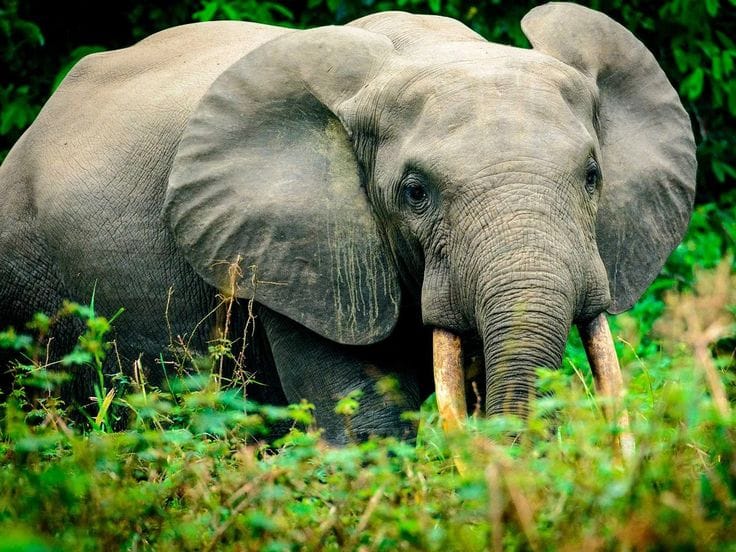Forest Elephants: Unsung heroes in the fight against climate change
Forest Elephants are on the brink of extinction. The loss of this species would result in a 7% decrease in the above-ground biomass in Central African rainforests, which is valued at around US$43 billion. We simply cannot afford to lose the carbon-capture services of this precious natural resource.

Endangered Species Day is observed each year as a way to raise awareness of the plight of those species that are likely to be extinct in the near future due to exploitation of the environment and lack of meaningful climate change action by world leaders.
It's also a day to celebrate those species that have recovered because of conservation efforts. Globally, many governments, NGOs, and grassroots initiatives have made great strides to protect our natural heritage, though the fight to preserve biodiversity is ongoing.
Elephants advocating for elephants
This year, EnergyElephant has chosen to shine a light on the Critically Endangered Forest Elephant, a keystone species native to the tropical rainforests of Central and West Africa, and one of the most threatened species on the planet today.
The challenges they face are manifold, including the effects of war, climate change, and habitat loss due to development, agriculture, drilling, and mining. However, poaching for the illegal ivory trade remains the number one threat to their survival.
First and foremost, it is the remarkable effectiveness of the Forest Elephant's role in carbon sequestration that underscores its ecological significance, emphasising a more pressing need for concerted conservation efforts.

Same same, but different
Although they were long grouped as a single species, scientists have determined there are actually two distinct species of African elephants, and both are at risk of extinction. Their combined population was estimated to have been around 26 million at the turn of the 19th Century. A little over 415,000 African elephants remain in the wild today. It's estimated that around a quarter to a third of the total African elephant population is made up of Forest Elephants (less than 10% of its pre-poaching population size), with Central Africa representing around 95% of their geographic range.
Significance of separation for conservation
Prior to 2021, when they were recognised as separate species for the first time, Forest Elephants were often overlooked by governments and donors. Distinguishing them from their more visible Savannah cousins was therefore seen as an important step toward focussing more attention on Forest Elephant-specific conservation efforts.
With a slower reproductive rate than Savannah Elephants, Forest Elephants can’t bounce back as quickly from population declines, and there just aren’t enough calves being born to make up for the losses from poaching.
Ecosystem engineers
The tropical rainforests inhabited by Forest Elephants serve as crucial carbon sinks, absorbing atmospheric carbon dioxide through photosynthesis and storing carbon in biomass and soil organic matter. Through their diet and movement patterns, these animals help maintain biodiversity, promote forest regeneration, and sequester carbon from the atmosphere. By prioritising conservation efforts for the Forest Elephant, we help promote the integrity of forest ecosystems, and bolster nature's ability to mitigate climate change.
Money talks
A group of researchers has developed a framework for natural resource valuation that helps people better understand the monetary value of individual species. This cost-benefit approach is key to enhancing conservation efforts, as people are more likely to action environmental investment when the stakes are expressed in financial terms.
The market value of carbon-capture services provided by just one Forest Elephant is calculated to be worth more than US$1.75 million during its 60–70 year lifespan. The extinction of this species would result in a decrease of as much as 7% in the above-ground biomass in Central African rainforests, which researchers value at around US$43 billion, based on a conservative carbon stock price.
Implications for sustainability
Being able to quantify the carbon-capture value of Forest Elephants in dollar terms provides a win-win solution for parties negotiating debt-for-climate swaps, especially because the geographic range of these animals extends predominantly across Heavily Indebted Poor Countries (HIPC).
These kind of partial debt relief operations for countries are conditional on debtor commitments to undertake climate-related investments. The amount of debt relief provided would be determined by the value of an elephant population’s carbon-capture services, using market prices. The money saved from reduced debt services should help facilitate the creation of public-private partnerships dedicated to elephant conservation initiatives.
Directing investment and enterprise along a more regenerative and sustainable path like this could not only help save the elephants, but also realign economies toward much-needed inclusive and green growth.
